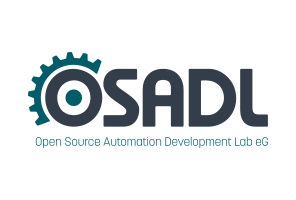Real Time Linux Workshops
1999 - 2000 - 2001 - 2002 - 2003 - 2004 - 2005 - 2006 - 2007 - 2008 - 2009 - 2010 - 2011 - 2012 - 2013 - 2014 - 2015
14th Real Time Linux Workshop, October 18 to 20, 2012 at the Department of Computer Science, University of North Carolina at Chapel Hill
Announcement - Call for papers (ASCII) - Hotels - Directions - Agenda - Paper Abstracts - Presentations - Registration - Abstract Submission - Sponsors - Gallery
Operating System Abstractions for Large-Scale Real-Time Multicores
Christopher Zimmer, North Carolina State University
Frank Mueller, North Carolina State University
The future of operating systems is rapidly changing as multicore processors are becoming ubiquitous. While multicores offer tremendous opportunities to meet processing demand, they come at the expense of limited scalability due to on-chip (interconnect) and off-chip (memory) resource contention. As the core count increases, current system and programming abstractions, such as pure task-level parallelism and single-image operating systems, become an obstacle rather than an aid in harnessing multicore power.
This work puts forth a novel design of Operating System Abstractions for Scalable Real-Time Multicores. By combining performance, predictability and scalability, we pave the path into a future of operating system supporting a massive number of cores on a single chip.
We embrace a distributed system design instead of the traditional shared memory view on a chip. Our distributed kernel features a pico-kernel per core. They are controlled by micro-kernels topologically centered within a set of cores that cooperatively comprise the overall operating system in a peer-to-peer fashion.
We utilize mesh-based network-on-chip (NoC) communication at the pico-kernel, which operate more efficiently and predictably than traditional shared memory abstractions. Preliminary results support these claims, i.e., they show that the shared memory design neither scales nor results in predictable execution.
We envision an era of so-called dark silicon, where cores are abundant (in the hundreds), yet potentially low in processing speed and also low in power consumption. Software tasks can readily be mapped onto cores. Scheduling no longer amounts to context switching but simply to core activation. A core becomes dark when deactivated during idle periods to save power while retaining task state to allow rapid re-activation.
Our work aims at novel research directions investigating the benefits of distributed software abstractions for real-time application on massive multicores with respect to predictability and scalability for the operating system and the application itself.




